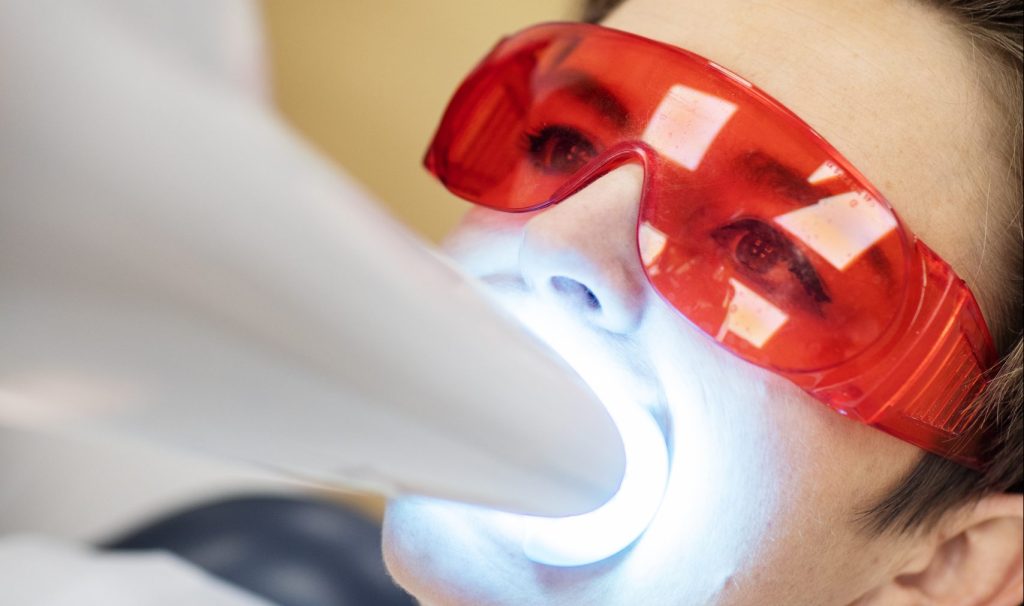Teeth whitening is one of the most popular procedures in a dental office aimed at achieving a brighter shade and improving the aesthetics of teeth. At our clinic, we offer professional teeth whitening services, allowing patients to enjoy a beautiful and dazzling smile.
The whitening procedure is recommended when a patient experiences discomfort due to teeth that are too dark or yellow. The prerequisite for the treatment is the restoration of all teeth affected by decay and the removal of tartar and deposits. Importantly, dental whitening can lighten the smile by several shades in just one visit to the clinic or after a few days of at-home, tray-based treatment.

Depending on the individual needs of the patient, at Medicadent clinic, we offer various teeth whitening methods:
Beyond lamp whitening – This method ensures a perfect result in a short period of time. The illumination of the teeth removes discoloration caused by improper diet, coffee consumption, or tobacco use. This type of procedure is recommended for individuals who seek to achieve an attractive tooth appearance as quickly as possible.
This method involves illuminating the teeth with a lamp that emits a whitening light. The light is directed onto the teeth after applying the appropriate whitening agent and protecting the gums from irritation. The total duration of the procedure is slightly over an hour. Prior to the treatment, it is recommended to remove plaque and tartar.
At-home tray-based teeth whitening – This type of whitening procedure involves using trays filled with a whitening agent that provides long-lasting results. The advantage of this method is that it can be performed at home since the trays do not cause irritation or discomfort and fit snugly onto the teeth. The waiting time for results typically ranges from 7 days to a month. Tray-based whitening requires at least 2 visits to our dental office.
Intracoronal Whitening of Endodontically Treated Teeth – Teeth that have undergone endodontic (root canal) treatment may gradually become discolored, darkened, or grayed over time. This occurs because, after the removal of the infected pulp (“tooth’s nerve”), the tooth is no longer nourished.
A solution to this issue is whitening the affected tooth. The procedure involves opening the previously treated tooth and applying a special whitening agent inside it. Subsequently, the tooth is sealed. The treatment is performed multiple times until the desired effect is achieved.






